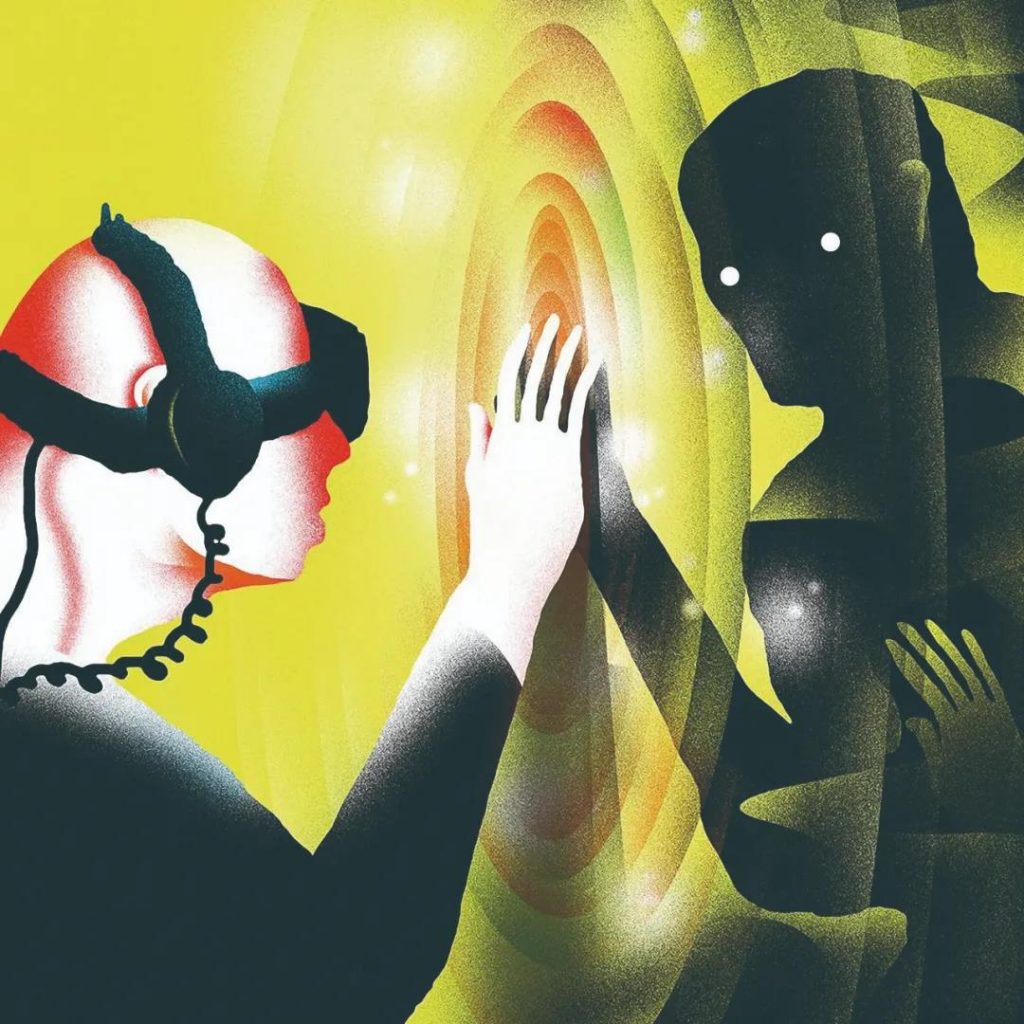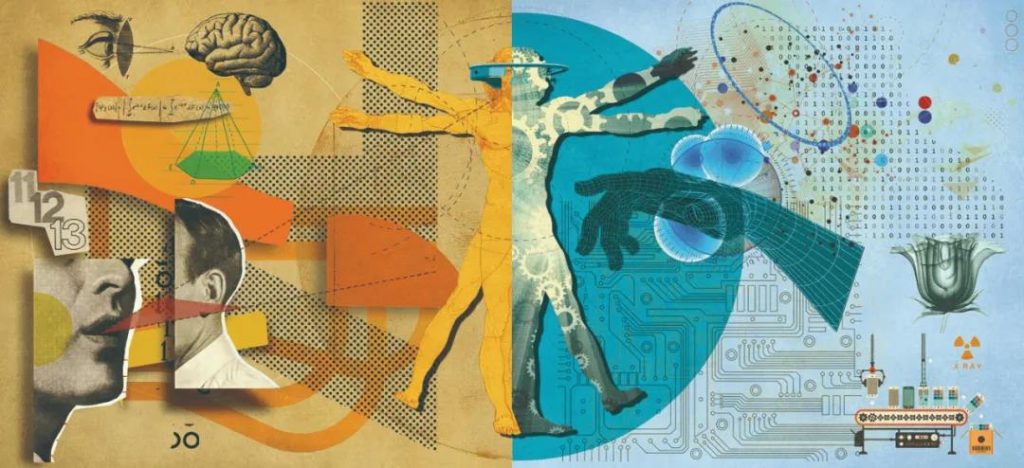
Reality, a thing that is difficult to define, we experience “it” every day, but we have never known how big it is, how far it is, where it came from, where it is going, and why it exists.
Does reality come from consciousness or does it really exist?
What is “reality”? For many people, “reality” is what really exists. It is made of matter such as chairs, tables, trees, houses, planets, animals, people, etc. It also contains some abstract concepts such as space-time. The sum of all these “real” things is called the “universe”.
So what about the ideology that arises in our brains, is it “real”?

According to the materialists, the answer is no. They argue that all properties of ideology are secondary and subordinate to real matter, and are merely the construction and behavior of our physical brains.
We humans behave in certain ways simply because our brains obey certain laws of physics — laws that all other objectively existing matter obeys too. Therefore, the ideology itself is no more real than the brain that produces it, and although we have not really understood it (what the essence of ideology is), it is only an “incidental phenomenon” produced by brain activity, which has an impact on people’s The effects of behavior do not go beyond those described by the laws of physics.
Some philosophers hold the exact opposite view. They believe that the experience of the mind itself should come first. Therefore, the “external reality” that constitutes this experience should be understood as a construction “abstracted” from these data of ideology, and is secondary.
Some even argue that the ideological experience of “me” is the primary one, and that other people’s experience itself is merely something abstracted from the sensory data of “me”.
According to Roger Penrose, a physicist at the University of Oxford, in any case, it is very difficult to convince anyone to believe in such a “solipsism”-based theory of reality.
Moreover, he found that the precision with which we observe the workings of nature is difficult to find its basis in any individual’s ideology. Apart from “solipsism,” he also finds it difficult to accept the idea of conscious experience as the first, because it forces him to admit that “external reality” only emerges from a certain form thing.
He believes that the real “external reality” is the endless extension of space and time in all directions, whether outward or inward, to a level that we cannot directly perceive with our senses, and requires the help of different kinds of precision Instruments can explore the universe at all scales.
The laws of physics that the senses cannot directly experience
Consciousness itself has long been a mystery. We don’t know how it arises from seemingly pure calculations and objective laws of physics that seem to govern the behavior of all objective things.
Of the laws of physics we know (and we don’t know all of them yet), some are far more precise than our direct experience with our senses, or even the combined computing power of all conscious individuals within human cognition.
On a macroscopic scale, such as Einstein’s theory of general relativity, it has a depth and precision that our senses cannot directly experience.
Newton’s theory of gravity was already quite accurate in terms of how the solar system works, but Einstein not only revised it (Einstein’s theory was more applicable when the gravitational field became larger), but also predicted completely new results (such as black holes, gravitational lensing, and gravitational waves, etc.).
Its theoretical predictions and actual observations are surprisingly consistent. For example, astronomers have been monitoring the orbit of a pulsar binary known as PSR 1913 +16 since the 1970s.
The data obtained through the observation not only confirmed the existence of gravitational waves, but also the signals received from space were in complete agreement with the predictions of Einstein’s theory, and their accuracy reached 14 decimal places.
It was not until 2015 that LIGO (Laser Interferometer Gravitational-Wave Observatory) did the first direct detection of gravitational waves.

At the microscopic scale, there are also many very precise observations that confirm the accuracy of quantum theory and its reasonable interpretation of relativistic fields – which provides us with quantum electrodynamics (the basis of the Standard Model of particle physics). one).
For example, the magnetic moment of an electron has been measured precisely to 12 decimal places, and the observed number is in perfect agreement with the predictions of quantum electrodynamics theory.
It should be pointed out that these fairly precise physical theories are based on extremely complex mathematics. Take gravity as an example. In the 17th century, when Newton first proposed his theory, he just explained it with simple numbers.
It was later discovered that when differential geometry was introduced into the theory, its accuracy was suddenly improved, tens of thousands of times higher than when it was originally proposed.
In the 20th century, Einstein increased the complexity of differential geometry, and its accuracy increased unprecedentedly, reaching 10 million times the original.
It can be seen that the improvement of theoretical accuracy is not due to the introduction of new theories, but only the understanding of a large number of new data. It is only after the theory has been developed that we can see its precision, revealing that matter behaves in a way that is consistent with the system of mathematics at the deepest level.
Physical Reality and Quantum Unreality
If mathematics does exist in objectively existing things, what entity is the “reality” we see about ourselves?
For example, what are the chairs we sit on actually made of? Apparently, it’s made of wood.
So, what is wood made of? It is made of fibers that were once living cells, so to speak. What about these fibers? is made up of a single atom. What about atoms? Atoms are made up of a nucleus and extranuclear electrons.
What about the nucleus? Made of protons and neutrons, held together by the strong nuclear force. These nuclei are surrounded by electrons, which are bound by a rather weak electromagnetic force. Continuing further down, protons and neutrons are thought to be composed of quarks, held together by entities called gluons.
So, what exactly are electrons, quarks, etc.? At this stage, we can only refer to the mathematical equations that describe them (because our senses are powerless to them).
For electrons and quarks, they are exactly what the Dirac equation describes. Quarks differ from electrons in that they have different masses, and quarks indulge in interactions that are invisible to electrons (the “strong interaction”). So, what are gluons? It is the “gauge” particle that transmits the strong interaction force, again a concept that can only be understood with the help of a mathematical description.

If we think that an electron is only the entity of the solution of a mathematical equation, how can we distinguish that electron from other electrons? Here, the basic principles of quantum mechanics can be explained for us.
Quantum theory says that all electrons are indistinguishable: we can’t say “this electron”, “that electron”, but only the whole system of electrons – for example, a system of several electrons. Likewise, quarks, gluons, and some other specific kinds of particles are all like this and cannot be distinguished. From this point of view, quantum reality is strange.
The disappearing “reality”
Indeed, quantum reality is strange in many ways. A single quantum particle can be in several different locations at the same time, spread out over an area, or oscillate like a wave (particles have wave-particle duality).
Indeed, quantum theory seems to be telling us that the “reality” we want to believe is so far removed from what we’re used to, that many quantum theorists would tell us not to take the concept of “reality” into account when thinking about particle-scale phenomena.
They also tell us that quantum behavior governs all phenomena, and that even large objects built from quantum components themselves obey the same quantum rules—for example, the building in front of you is ultimately made of invisible, intangible particles. This is unacceptable.
Where does quantum non-reality come from, and where does the physical reality we actually experience come from? To these questions, today’s quantum theory does not give satisfactory answers.
Some people may think that today’s quantum theory is not completely correct.
However, it has to be said that, as of now, there is no accepted observational data that can be used against quantum mechanics – all the modifications to it are now only speculative.
Furthermore, even general relativity, which involves the concept of space-time bending, itself deviates from our accustomed concept of “reality.” So whether we look at it on a quantum scale or through time and space on the level of general relativity, the reality of chairs, tables, and other matter seems to disappear, replaced by a deeper reality that exists in the world of mathematics.
A view of “reality”
So where do mathematical entities come from? There is a perception that it might exist in their own world—the Platonic world of mathematics. This view is welcomed by many mathematicians. Because in this way, the truth the mathematician seeks already “exists” in a clear sense – the mathematician’s job is to discover the truth, not invent it.
It is not absurd for a mathematical platonist to find the ultimate destination of objective reality in the Platonic world. But for many other philosophers this is unacceptable.
They argue that mathematics is only an idealized concept of consciousness, and if we think of mathematics as ultimately produced by our thoughts, then we are caught in a cycle: our ideological consciousness (mathematics) arises from our objectively existing brain, And those laws of physics (including the structure of the brain) are based on mathematics, and mathematics requires our brains to support its existence.

Roger Penrose argues that there are three distinct realities in total, objective, conscious, and (Platonic) mathematical, and the relationship between them has so far not been easy to explain.
For example, we do not yet properly understand why the objective world is so accurately reflected in the Platonic mathematical world; nor do we fully understand when matter (such as that present in a healthy human brain) is somehow organized How consciousness arises when it does not really understand how it can predict mathematical truths when it is directed to understand mathematical problems.
What is the nature of “objective reality”? Penrose did not give a clear answer. But he believes that we should first acknowledge and accept that the Platonic mathematical world is eternal and that we can access it through mental activity (the brain).
Only in this way can we deal with the connection between “objective reality” and the other two realities – conscious and mathematical, and can help to correctly solve the problem of “reality”.
Comments